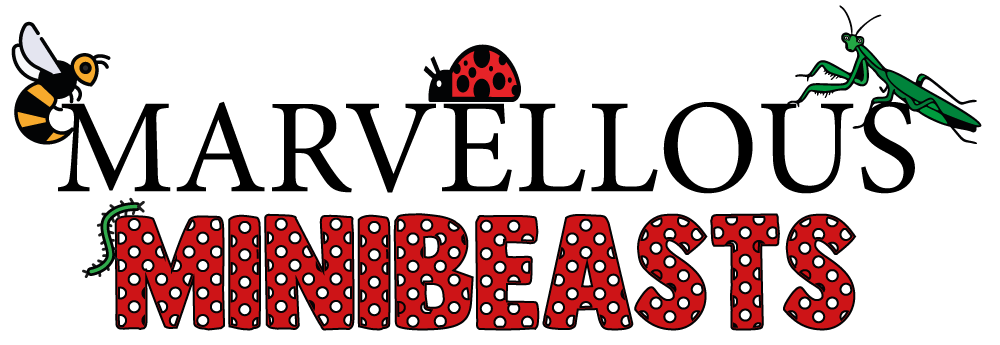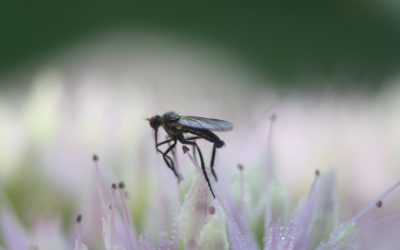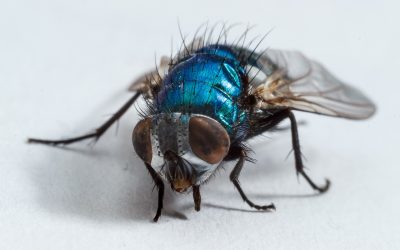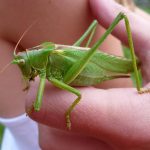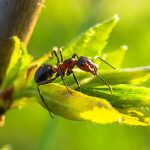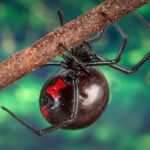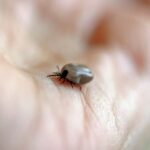Insects are fascinating creatures that come in all shapes and sizes, and they play an important role in our ecosystem. However, have you ever wondered, “Why are most insects nocturnal?” Nocturnal insects are those that are active during the night and rest during the day. They have unique characteristics that allow them to survive and thrive in the dark.
Before we dive into the world of nocturnal insects, here’s a fun fact to get you started: Did you know that fireflies are not actually flies? They are beetles! Continue reading to discover more information about nocturnal insects and some fascinating facts about these incredible creatures.
What are nocturnal insects?

Nocturnal insects are those that are active during the night and rest during the day. They have adapted to the darkness of the night and have developed unique characteristics to help them survive and thrive in low-light conditions.
These adaptations include heightened senses, specialised vision, and other sensory abilities that allow them to navigate, communicate, find food, and avoid predators in the dark.
What is an insect? click here to find out more.
Types of Nocturnal Insects

Nocturnal insects can be found in a wide variety of orders and families, with different adaptations and characteristics. In this section, we will explore some of the most common types of nocturnal insects.
Beetles
Beetles are the largest order of insects, and many of them are active during the night. They have a hard exoskeleton that protects them from predators, and many of them are able to fly. Some nocturnal beetle species, such as the firefly, are bioluminescent and use their light to communicate with other members of their species.
Moths and butterflies
Moths and butterflies belong to the order Lepidoptera, and many of them are active at night. They have large, delicate wings that are covered in scales, and many of them have specialised mouthparts for feeding on nectar. Moths are attracted to light sources, which can sometimes lead them to become a nuisance around homes and buildings.
Cockroaches
Cockroaches are well-known for their ability to survive in a variety of environments, and many species are active at night. They have a flattened body shape that allows them to squeeze into small spaces, and some species can fly. While they are often considered pests, cockroaches play an important role in the ecosystem by breaking down organic matter.
Crickets and grasshoppers
Crickets and grasshoppers are part of the order Orthoptera, and many species are active at night. They have powerful legs that allow them to jump and hop, and they are important sources of food for many other animals. Some species of crickets and grasshoppers are known for their distinctive chirping sounds, which they use to communicate with other members of their species.
Ants and termites
Ants and termites are social insects that live in colonies. While many species are active during the day, some species, such as the harvester ant, are active at night. They have a complex social structure and communicate with each other using chemical signals. Termites play an important role in breaking down dead wood and returning nutrients to the soil.
Katydids
Katydids belong to the order Orthoptera and are related to crickets and grasshoppers. They are known for their large, leaf-like wings and long, slender bodies. Many species of katydids are active at night and use their wings to produce a distinctive, high-pitched buzzing sound.
Earwigs
Earwigs are small insects with distinctive pincers on their rear ends. They are found in many parts of the world and are active at night. While they are often considered pests, earwigs are also important predators that help control other insect populations.
Fireflies
Fireflies, also known as lightning bugs, are a type of beetle known for their bioluminescence. They are found in many parts of the world and are active at night. Fireflies use their light to communicate with other members of their species and to attract mates.
Do insects make good pets for children? Click here to find out.
How to identify nocturnal insects

Nocturnal insects can be identified by their behaviour, physical characteristics, and habitat. They are often seen flying or crawling around at night, and they may be attracted to lights.
Nocturnal insects also have adaptations that help them see and navigate in the dark, such as compound eyes or specialised antennae. Some species may also have physical characteristics, such as wings or legs, that are adapted for jumping or flying in low-light conditions.
By understanding the definition, examples, and identification of nocturnal insects, we can begin to appreciate the unique adaptations and behaviours that allow them to thrive in the darkness of the night. In the next section, we will explore the reasons why most insects are nocturnal.
Why are most insects nocturnal?

Have you ever wondered why most insects are active at night? Let’s explore some of the reasons why these fascinating creatures have evolved to be nocturnal.
Evolutionary adaptations
One of the main reasons why most insects are nocturnal is due to evolutionary adaptations. Over time, insects have adapted to different environments and conditions, including the darkness of the night. Insects have developed specialised eyes and other sensory organs that allow them to navigate, communicate, and find food in low-light conditions. These adaptations have helped them to survive and thrive in a variety of environments, from forests and jungles to deserts and grasslands.
Avoiding predators
Another reason most insects are nocturnal is to avoid predators. During the day, insects are more visible to predators such as birds, lizards, and other insects. By being active at night, they can reduce their risk of being eaten or attacked. Insects have also evolved to use camouflage and other defence mechanisms to help them avoid detection by predators.
Finding food
Many nocturnal insects are active at night because that is when their food sources are available. For example, moths are attracted to light, which is often used by humans for illumination at night. Fireflies are attracted to each other’s light for mating purposes. Other insects may feed on flowers that bloom at night or on other insects that are also active at night.
Mating and reproduction
Nocturnal insects are also active at night to mate and reproduce. Many insects have specific mating behaviours that are triggered by darkness or the presence of certain stimuli at night. For example, male crickets use their chirping sounds to attract females. Fireflies use their flashing lights to signal potential mates.
Other Factors
Other factors that contribute to why most insects are nocturnal include temperature regulation and competition for resources. Some insects may be more active at night to avoid the heat of the day or to compete with other insects for food and resources.
By understanding the reasons why most insects are nocturnal, we can gain a deeper appreciation for these amazing creatures and their adaptations. In the next section, we will explore some of the common misconceptions about nocturnal insects.
Why are insects attracted to the light? Click here to find out.
How do nocturnal insects survive in the dark?

Nocturnal insects have evolved a variety of tactics to help them survive in the dark of the night. These adaptations allow them to navigate, find food, and avoid predators despite the low light conditions. Let’s take a closer look at some of these tactics.
Sensory Adaptations
One of the most important ways that nocturnal insects survive in the dark is through sensory adaptations. Insects have developed specialised eyes, antennae, and other sensory organs that allow them to detect and interpret their surroundings. For example, many nocturnal insects have compound eyes that are more sensitive to light than human eyes. Some insects, such as moths and fireflies, also use pheromones and other chemical signals to communicate with each other in the dark.
Bioluminescence
Bioluminescence is a process by which some nocturnal insects produce light to attract mates or prey. Fireflies are perhaps the best-known example of bioluminescent insects. They use a chemical reaction to produce light in their abdomens, which they use to signal to potential mates. Some other insects, such as glow worms, also use bioluminescence for similar purposes.
Camouflage
Many nocturnal insects employ camouflage as another means of survival. By blending in with their surroundings, insects can avoid detection by predators. For example, many moths have wings that are patterned to resemble tree bark or leaves, making them difficult to spot. Some insects, such as stick insects, have bodies that resemble twigs or branches, allowing them to blend in with their environment.
Other survival tactics
Nocturnal insects have also developed a variety of other survival tactics, such as burrowing underground during the day or hiding in crevices or under leaves. Some insects, such as cockroaches, are also able to run quickly to evade predators. Additionally, some insects have developed defensive mechanisms, such as the ability to release foul-smelling chemicals or toxins, to deter predators.
By utilising these sensory adaptations, bioluminescence, camouflage, and other survival tactics, nocturnal insects have been able to successfully navigate, communicate, find food, and avoid predators in the darkness of the night. In the next section, we will explore some of the benefits and challenges of being a nocturnal insect.
What Is The Difference Between Insects, Arachnids, And Myriapods? Click here to find out.
Fun facts about nocturnal insects

Nocturnal insects are not only fascinating, but they also have many interesting and unique features that make them stand out. In this section you will find some fun facts about these amazing creatures.
- Some species of moths can fly up to 30 miles per hour, making them some of the fastest-flying insects in the world.
- Cockroaches can hold their breath for up to 40 minutes and can survive without food for several weeks.
- Many species of fireflies synchronise their flashing patterns, creating a beautiful display of light.
- Female mosquitoes are attracted to the carbon dioxide that humans exhale, making us their favourite targets.
- Some species of katydids have wings that are shaped like leaves, making them almost invisible in their natural habitat.
- Many species of ants use pheromones to communicate with each other and coordinate their activities.
- The Goliath beetle, found in Africa, is one of the largest beetles in the world, growing up to 4 inches long and weighing up to 3.5 ounces.
- The Hercules moth, found in Australia, has a wingspan of up to 11 inches, making it one of the largest moths in the world.
- Some species of scorpions can glow in the dark under ultraviolet light, giving them an eerie appearance.
- The bombardier beetle has a unique defence mechanism, where it sprays a hot, noxious chemical from its abdomen to deter predators.
Final thoughts
Nocturnal insects are a fascinating group of creatures that have adapted to life in the dark. They have unique characteristics and behaviours that allow them to thrive in low-light conditions, and they play important roles in our ecosystem as predators, pollinators, and decomposers. By understanding more about these amazing creatures, we can develop a greater appreciation for the diversity of life on our planet and the interconnectedness of all living things. Whether you are a child, a teen, or an adult, learning about nocturnal insects is a fun and educational way to explore the natural world and expand your knowledge of the amazing creatures that inhabit it.

You Might Also Like
Will Humans Survive If All Insects Were To Disappear?
Though we humans are responsible for a lot of the things that go on in the world, we cannot take credit for them all.
What Are The Smartest Insects?
Just because insects often have pretty small brains, it doesn’t always mean that they are totally useless.
How Many Times Will One Mosquito Bite in Her Lifetime?
Mosquitos are one of the most annoying insects that you will find, and from June to August, you can expect them to be around due to the fact that this is when they are likely to be in season.
What Is The Dumbest Insect?
You might have heard about some different types of insects that are known to be quite intelligent, but as well as this, there are also those that are pretty dumb.
Do leaf Insects Bite or Sting?
Whether you own your very own stick insect, or you are thinking about getting one, you probably have lots of questions about this type of insect, especially concerning whether or not they can bite or sting you.
